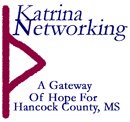Project Baby Box
1. Buy a bank box – the kind used to store files and documents.
They are made of sturdy cardboard, come flat and must be folded into box shape, have lids and are available at most stores that stock office supplies.
2. Choose a gender and age category for "your" baby.
Cut out the appropriate label and check the age group for which you will be packing the box. Click here for Baby Boy label or Baby Girl label.
3. Refer to the shopping list below and purchase the items required for the age group you have chosen.
4. Pack the items neatly in the box – start with the diapers on the bottom, and then work your way up from there. It will all fit – you just might have to be creative! (Please leave all food items and utensils in their original packaging.)
5. Once you have filled the box with all of the necessary items, you may have some room left over. Feel free to be creative, as long as it's appropriate and in no way culturally insensitive.
(Examples: a special pair of baby booties or homemade item, an inspirational book or small Bible for the parents, a small toy item, any other baby item you think might be useful.)
6. Take a moment to write a note of encouragement to the parents of the baby who will be receiving the box. Remember – many of these people have lost everything, and are relying upon the kindness of strangers to have their basic needs met. An encouraging word will likely go a long way!
7. Securely tape the lid of your box in place, make sure the handle holes of the box are covered with tape (so nothing falls out or is stolen en route) and affix the label to the outside of the box on one end.
8. Address your box to the pregnancy resource center of your choice from the list below and send it via U.S. mail or UPS – whichever is cheaper in your area.
9. Continue to pray for the baby and family that receive your box, and for all of those in the hurricane devastated region.
Each box should include:
1 jumbo pkg. diapers
1 can powdered formula (12 oz. or larger)
4 pkgs. Baby food (plastic containers – 3-9 months, only)
1 pkg. baby wipes
1 or 2 outfits
1 pkg. onesies
1 bottle baby wash
1 bottle baby lotion
1 tube diaper rash ointment
3 baby bottles
1 pkg. baby spoons
1 small covered baby bowl
1 box baby cereal (0-9 months only)
1 blanket
1 or 2 bibs
1 or 2 baby washcloths
1 baby towel
1 pkg. pacifiers
1 bottle Baby Tylenol
Note of encouragement to family
Optional items:
Baby toy
Special handmade item
Booties/socks
Devotional/inspirational book
Small Bible
Mommy 101
Tasia PoyadouMiss Mississippi Teen
C/O City of Waveland
335 Coleman Ave. #8
Waveland, MS 39576
(Read more here http://wavelandrelief.blogspot.com/2007/02/project-mommy-101.html)
Gulf Coast Pregnancy Resource Centers:
ACCESS Pregnancy and Referal Center
1799 Stumpf Blvd. Building 2, Suite 9
Gretna, Louisiana 70056
Director: Kay Bongard
N. Baton Rouge Women's Help Center
7515 Scenic Highway
Baton Rouge, LA 70874
A Pregnancy Center & Clinic
c/o Sharon Hayes
913 College Road, Suite 206
Lafayette, LA 70503
Ark-La-Tex Crisis Pregnancy Center
921 Shreveport Barksdale Hwy.
Shreveport, LA 71105
Center for Pregnancy Choices (815)
4539 Office Park Dr.
Jackson, MS 39206
Women's Resource Center
772 B Howard Ave.
(Vieux Marche Hall)
Biloxi, MS 39533
Friendship Baptist Church
(251) 865 4724
Hurricane Relief Fund
P.O. Box 756
Friendship Baptist Church
Grand Bay, Alabama 36541
Women's Resource Center
308 S. Sage Ave.
Mobile, AL 36606
Pregnancy Resource Center
745 Grace Ave.
Panama City, FL 32401
Sozo Life Connection
419 Racetrack Rd.
Fort Walton Beach, FL 32547
Pregnancy Help and Information Center
1710 South Gadsen St.
Tallahassee, FL 32301
Safe Harbor Women's Resource Center
813 E. Gadsen
Pensacola, FL 32501
Pregnancy Resource Center
5736 Stewart St.
Milton, FL 32570
Lily of the Valley Ministries Inc.
1605 Murray St. Suite 224
Alexandria, La. 71301
www.PregnantAndAlone.net/Lily

